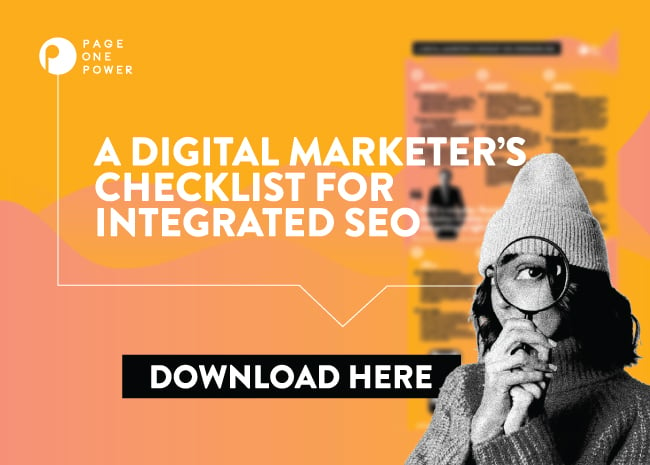What is Cost Per Thousand (CPM)?
Cost per thousand or cost per mille (CPM) refers to the advertising cost to obtain one thousand views or impressions for a given advertisement.
Cost Per Thousand (CPM) Definition in Marketing
Cost per thousand (CPT) represents the cost that an advertiser pays in order to obtain one thousand views or impressions of an advertisement. Cost per mille (CPM) and CPT are interchangeable because mille is Latin for “thousand.”
What Is CPM?
CPMs are one of the most common ad pricing models used. CPM is a tool to help facilitate a comparison of the efficiency of advertising opportunities, and an understanding of CPM can help with search engine optimization (SEO).
Why Is CPM Important?
In today’s society, online marketing is crucial in all its forms. Cost per thousand becomes essential because it compares the cost-effectiveness of an array of media options. It acts as a risk versus rewards calculator that directly tells users the cost of an investment in an advertisement, which gives the ability to compare and contrast between advertisement vehicles. In most cases, the lower a CPM is, the more practical an option it becomes. This is due to the fact that a lower CPM cost entails less money spent in order to attain an audience of 1,000 people, although this is not always the case.
Just because the CPM is lower or cheaper does not mean that advertising channel is the most viable option. In some cases, low-priced CPM strategies are a poor way to spend an advertising budget because the keywords you’re targeting aren’t actually often searched for. As such, an understanding of keyword research can help when choosing advertising options based on searcher intent. “Quality over quantity” is also a good thought to keep in the back of your mind when weighing out potential advertising ventures. That being said, it is important to understand that marketers use more than just CPM for advertising purposes. Researching which advertisement vehicle to utilize is just as important.
How to Calculate CPM
CPM is calculated by dividing the cost of the placement of an advertisement by the number of impressions that are generated from that placement. The equation for CPM is relatively simple:
Cost of Advertisement / Projected Number of Impressions X 1,000 = CPM
Imagine that you are considering purchasing a web advertisement for 400 dollars. Let’s also assume that the advertisement is projected to garner 3,200 impressions. Taking the formula from above, we can predict the CPM of the potential web advertisement:
400 dollars (cost) / 3,200 (impressions) x 1,000 = 125 dollars CPM
SEO Keyword Research
Read our comprehensive SEO keyword research guide to learn how you can get your web pages to show up higher in the SERPs.
Link Building Guide
Check out our ultimate link building guide to learn how to earn powerful backlinks to empower your web content in search.
CPM vs CPC vs CPA
There are multiple methods to choose from when deciding how to price website ads. Different methods have different purposes, and some methods are more (or less) appropriate in the context of particular campaigns and in relation to overall intent.
CPM
Cost per thousand is best utilized when the advertising intent is to increase brand awareness. This is because the exposure from an ad placed on a high-traffic website will help promote a brand name or any particular message whether or not anyone ever clicks on the actual ad.
CPC
Cost per click (CPC) is a method for pricing web ads that require the advertiser to pay every time that a website ad is clicked on by a visitor. This method of advertisement pricing is focused less on building brand awareness, and more so on the promotion of a particular product or service. The equation for CPC differs from CPM, but is also simple:
Price of Ad / Number of Clicks = CPC
Ex: 6,750 dollars (the price of ad) / 1,350 (the number of clicks) = 5-dollars CPC
The equation above is how most advertisements measure CPC. The other way that this is calculated is through a pay per click (PPC) method where advertisers are billed for each individual click.
CPA
Cost per acquisition (CPA) is a method for pricing web ads that only charges the advertiser when a visitor makes a purchase after clicking on the ad. This is another scenario that is based highly on promoting a specific product or service as opposed to creating brand awareness. The equation associated is also a simple one:
Price of Ad / Number of Acquisitions = Cost Per Acquisition
Ex: 300 dollars (the price of the ad) / 15 (the number of acquisitions) = 20 CPA
Website Impressions
Website impressions are used to quantify the views of an advertisement. Website impressions are also oftentimes called “ad view.” In most cases, impressions are used in order to calculate the cost that an advertiser pays versus the success of the advertisement.
There are some discrepancies on how to accurately assess impressions because individuals claim that there is no concrete way to measure them. This can oftentimes skew results when, for example, a single visitor views a page multiple times. Results can also be skewed by bots crawling the internet and impression counts not distinguishing the difference between human viewers versus bot viewers. Ads can also be blocked or fail to load and that may also create discrepancies.
Impressions vs Pageviews
Impressions are frequently mistaken for pageviews, but they are different. Pageviews are defined by a user visiting the page. There is one pageview per visitor and pageviews are counted for each separate page that your site features. Ultimately, impressions illustrate the number of times an ad is loaded and displayed, while pageviews demonstrate the number of times any page is visited.

